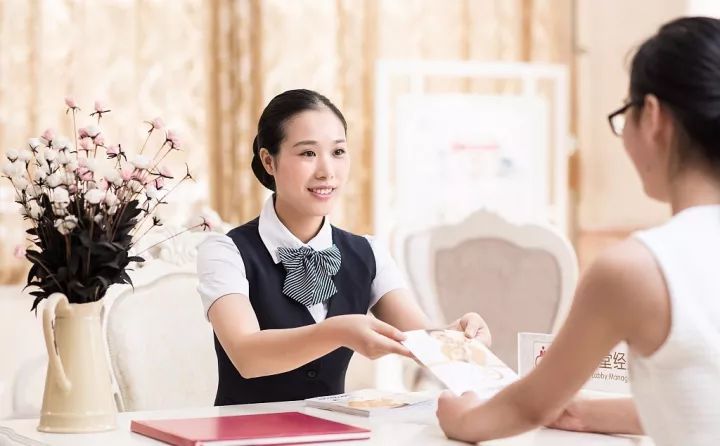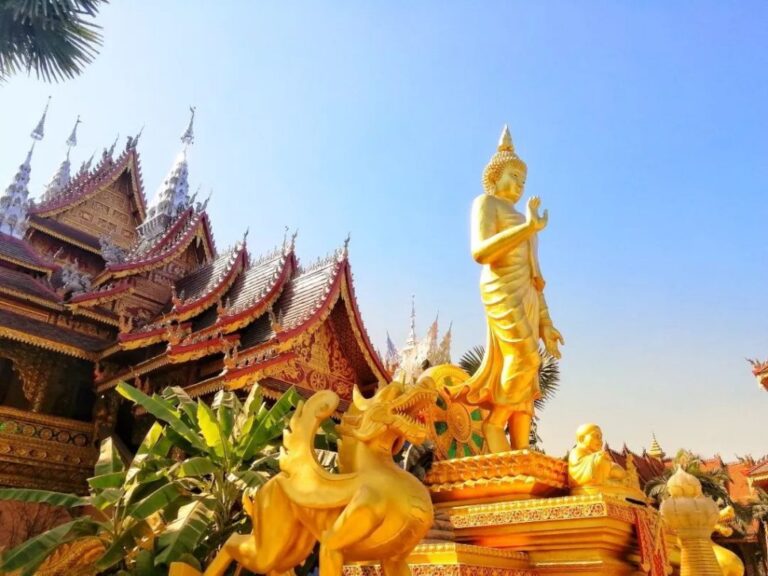
The importance of business reception in Chinese etiquette
In business reception, proper use of business reception etiquette can give visiting Chinese customers a good impression and help the smooth progress of business interactions. The following is about the importance of business reception etiquette, welcome to read!
The importance of business reception etiquette
China has a history of five thousand years of civilization and is known as the “Land of Etiquette”. Etiquette civilization has had a broad and far-reaching impact on Chinese traditional culture and social development. Its content is very rich and its coverage is very wide, penetrating into almost every aspect of ancient society. In the late Spring and Autumn Period, people began to pay attention to the connection and difference between the two concepts of etiquette and etiquette. Etiquette and etiquette are the “roots of etiquette” and “the text of etiquette” mentioned in the “Book of Rites”, that is, the spiritual principles and formal norms of etiquette. Etiquette or etiquette includes three aspects.
The first is etiquette as a spiritual principle, that is, the benevolence advocated by Confucianism.
Benevolence is people’s inner moral emotions and requirements. Confucius defined “benevolence” as “loving others” and explained that “a benevolent person will establish others if he wants to establish himself, and he will help others if he wants to achieve others.” “Don’t do to others what you don’t want others to do to you.” Benevolence”. “Loving others” is the spiritual connotation and emotional essence of benevolence, while etiquette is the external expression of benevolence. From this, Confucius clearly pointed out: “If people are not benevolent, what is etiquette?” If “people are not benevolent,” then etiquette will be out of the question. Only those who are dignified, generous, honest, diligent, and kind can know etiquette, observe etiquette, and respect etiquette. The original meaning of the word benevolence refers to the respect and friendship between people.
Confucius asked people not to ignore the spirit of etiquette and forget the original benevolent emotion of etiquette, but only care about the form of etiquette. The second is ritual as an institutional arrangement, the so-called ritual system. In ancient China, the functional goal of ritual was to maintain hierarchy. Confucius, who was born in the era of “the collapse of rituals and the collapse of music”, emphasized that “to govern the people in peace, one must not be good at rituals.” (“Book of Rites,Jingjie”). He spent his life to restore the social and political order and ethics that were in line with the patriarchal hierarchy of Zhou rites. Struggle for order. Confucius and subsequent Confucian scholars especially liked to talk about hierarchical status, and everything must be distinguished between high and low. This is an important flaw in Confucianism. Confucius emphasized that “it is based on etiquette”, “If you don’t learn etiquette, you can’t establish it”, “If you don’t know etiquette, you can’t establish it”. The firstthing that establishes people through etiquette is that etiquette is the way for individuals to adapt to society. In the hierarchical structure of social political ethics with strict hierarchy and orderly hierarchy, you must first clarify your identity and status without overstepping your position. This hierarchical rather than equal ideological concept has had an extremely profound impact on traditional Chinese ethical concepts and people’s etiquette behavior.
Third, etiquette, as a civilized and courteous behavior, is the cultivation and quality shown by individuals in social interaction activities. As an educator, Confucius regarded etiquette as one of the six basic talents that students are required to master, the so-called six arts. If a person wants to become a gentle, gentle and honest gentleman, cultivate good personal qualities, and coordinate harmonious interpersonal relationships, he must learn etiquette, know etiquette, and practice etiquette. Regarding specific ritual forms, Confucius showed an open and dialectical attitude. What Confucius valued more was the emotional connotation of etiquette forms, which is the true relationship between people, rather than being rigidly rigid in form and opposing cumbersome etiquette. “The Analects of Confucius·Bayi” records: “Lin Fang asked about the origin of etiquette. Confucius said: ‘Great question! Rather than extravagant etiquette, it is better to be thrifty; to mourn, rather than to change it, it is better to be sad.'” At the same time, Confucius saw etiquette behavior The form is not static and will inevitably gain or lose due to changes in the times. Etiquette is relatively flexible and changeable.
There is no doubt that the basic spirit of modern etiquette is equality, respect and friendship. The traditional Chinese etiquette civilization takes the authentic relationship of respect and friendship between people as the basic value, values the emotional connotation of etiquette forms, and respects the elderly and the virtuous, has appropriate etiquette, treats others politely, and has good appearance. Etiquette standards such as these still have modern value.

Treat others in the most appropriate manner
Civilized etiquette is a key to open the heart, a window to exchange ideas, a bridge to communicate feelings, and a lubricant to coordinate interpersonal relationships and public relations. The ancients said: “The way to communicate is also to use the Tao, and the reception is also to be polite.” Reception is essentially a concierge activity, manifested in certain reception rituals, etiquette, specifications and standards. The design and implementation of reception etiquette runs through the design of welcomes, meetings, banquets and other activities, as well as specific activities and arrangements such as food, accommodation, and transportation. It reflects the organization’s communicative posture and image, and is the basis for guests to feel and experience people and people. Object of beauty in human relationships. “The purpose of etiquette is harmony.” The opening chapter of the book “Collection of Western Etiquette” published in 1922 reads: “On the surface, etiquette has countless rules and precepts, but its fundamental purpose is to make the world a place full of joy of life, making people approachable.”
Etiquette is everywhere, all the time. For example, how to choose a term of address when interacting with guests? How to express greetings, greetings and blessings to? What kind of personal image and communicative posture should a host maintain? When accompanying a guest in an elevator, should the escort go in first or last?
When getting out of the elevator, who should get out first? When attending a formal social dinner, what should we pay attention to when dressing up? Wait, everyone will encounter these problems. Maybe we treat it as a trivial matter and don’t care at all; maybe we do, but we deal with it based on subjective experience, and we have countless minds about whether it is right or wrong.
Reception etiquette is an important part of the art of reception. Learning and practicing reception etiquette is to create perfect reception etiquette and treat people in the most appropriate way during the reception process.
Thus it is highly required to:
(1) Master etiquette knowledge and practice etiquette norms. The first is to master the knowledge of reception etiquette, which is the basic quality necessary for reception staff. Second, we must pay attention to moral cultivation. To learn and practice etiquette, only by cultivating it internally can you practice it externally. Third, we must pay attention to practical cultivation. Practicing etiquette cannot be achieved overnight. It must be based on daily life, pay attention to details, practice etiquette all the time, use etiquette everywhere, and constantly and consciously improve the ability to practice etiquette.
(2) Pay attention to personal image and communication posture. The personal image of the receptionist includes the person’s appearance and dress, as well as the communicative posture presented by speech,behavior, and expression. Creating a good personal image is necessary to complete the reception task, and it is also a manifestation of the self-respect and self-respect of the reception staff. The image of the host organization is presented through the personal image.
(3) Cultivate a correct reception mentality. It is necessary to correctly understand the relationship between political and personal equality and guest-orientedness, adhere to the principles of official reception that are conducive to official business, simplify etiquette, be pragmatic and frugal, eliminate waste, and respect the habits of ethnic minorities, provide guests with quality services, and pay attention to improving the value of reception. Emotional quality, customer-oriented, equal treatment, constantly improve the affinity of reception value, and promote the standardization of reception work.
(4) Pay attention to details. In reception activities, we must always be enthusiastic, thoughtful and rigorous, treat guests with affection and courtesy, pay attention to reception details, and make the reception process a process of spreading and creating beauty, so that guests can come happy and leave satisfied. We must respect and try our best to meet the reasonable requirements of each guest, pay attention to their explicit or potential service needs, and provide personalized services to guests.
(5) Pay attention to differences. Difference is one of the basic characteristics of etiquette. Etiquette norms are established by convention. Different countries and regions often have different etiquette norms due to different national characteristics, cultural traditions, religious beliefs, and living habits. “There are different styles in ten miles, and different customs in a hundred miles.” This requires increasing understanding and respecting differences. , Don’t be the only one who behaves in your own way. Otherwise, you may inadvertently cause emotional harm to your guests.
(6) Simplify etiquette. Etiquette is not static, but evolves with the development and changes of the times, and learns from each other as internal and external exchanges become more frequent. The development and change process of etiquette is a process of unity of inheritance and innovation, and of difference and integration. Simplifying etiquette is a general trend in the development of etiquette.
(7) Distance creates beauty. Maintaining an appropriate distance during the reception will help smooth communication and respect the other party. Distance creates a sense of beauty. For example, when using a title, you should use honorifics; especially do not get too close to guests casually and avoid “enthusiastic offside”.

Essentials of business reception etiquette
Welcoming guests
Be warm and friendly to guests who come as scheduled.
For distinguished guests or guests coming from afar, a special person should be assigned to arrive at the location (or appropriate location) agreed upon by both parties in advance and wait for the guest’s arrival; the reception staff should arrive at the airport, dock or station in advance to show respect for the guest. After the guest arrives, if the guest and host have known each other for a long time, the two parties will greet each other directly. If it is the first time to meet, usually the concierge or the highest-ranking one of our greeters will be the first to introduce his own greeters to the guest one by one, and then the guests will The person with the highest status introduces the guests to the host in a certain order.
For guests from the local area, you should generally greet them at the unit gate or under the office building half an hour in advance.
Hospitality
With the vigorous development of the market economy, business activities between each other are
becoming more and more frequent, and reception work should also become more and more standardized.
Hospitality must be civilized, polite, and warm. The reception work should be rigorous, enthusiastic,
thoughtful, and meticulous in terms of etiquette.
- Civilized hospitality
Civilized hospitality is mainly reflected in the host’s language, behavior and attitude: greetings when
coming, answering questions, and sending farewells when leaving. - Treat guests politely
Pay attention to the use of polite words: greetings, requests, thanks, apologies, and farewells - Hospitality
Pay attention to the three operational links:
Eye to eye: Look at the other person with your eyes, and look at them levelly to show respect.
Pay attention to the three operational links:
Speaking: the content of the speech must be in line with the other party’s actual situation, clearly express what is on the mind, and must be greeted three times, accurately grasp the other party’s topic tendency, and make a reasonable response.
Attention: When speaking, the meaning is clear, the attitude is calm and friendly, the meaning of others’ words is understood, and the response is quick and accurate.
A cup of fragrant tea warms the heart
China has had the traditional etiquette of serving tea to guests since ancient times. When Chinese people receive guests in the office or home, tea is a must. Specially holding tea parties to entertain guests is alsocommon in business activities.
Teacup: Before making tea for guests, wash your hands and clean the teacup; the teacup should be free of damage, cracks, and rust; ceramic teacups are preferred.
Tea: Before making tea, you can ask your guests for their opinions in advance.
Making tea: Don’t make it too strong or too light, just fill it 80% full.
Serving tea: When the host serves tea to the guest, he should stand up, hand the tea cup to the guest with both hands, and then say “please”. Guests should also stand up, take the tea cup with both hands, and say thank you.
Drinking tea: When drinking tea, you should only taste it carefully in small sips. Do not take large sips of water or make any noise. Do not take tea leaves floating on the water out of the cup with your hands, and do not eat the tea leaves.
Seeing a visitor out
Greetings when seeing off guests: remind the guests of their belongings and say some kind words to the guests who are about to leave, so that the guests can leave happily.
Basic principle: serve until the guests are out of sight. See off guests together with your boss, and stay one step behind.
Using of farewell words after a business meeting
- Farewell words between host and guest
When a guest bids farewell to the host, he or she often responds with words such as “please come back” or “please stay”, and the host responds with words such as “walk slowly” and “don’t say goodbye”. If the guest is traveling far away, you can say farewell words such as wishing you a pleasant journey, a safe journey, and hello. - Farewell words between acquaintances
You can say come back when you have time, come and sit when you have time, come and drink tea when you have time, etc. You can also say to say hello to your family members to show politeness. - Goodbye
This is a popular farewell phrase nowadays and is suitable for most occasions. Similar ones include
Byebye, Good Night, etc.
You can learn more about these and other customs, as well as the etiquette system of the Chinese at our special language courses, which are separately dedicated to this topic. If necessary, we can also conduct a seminar or presentation on a topic of your choice within the framework of your organization’s needs.


